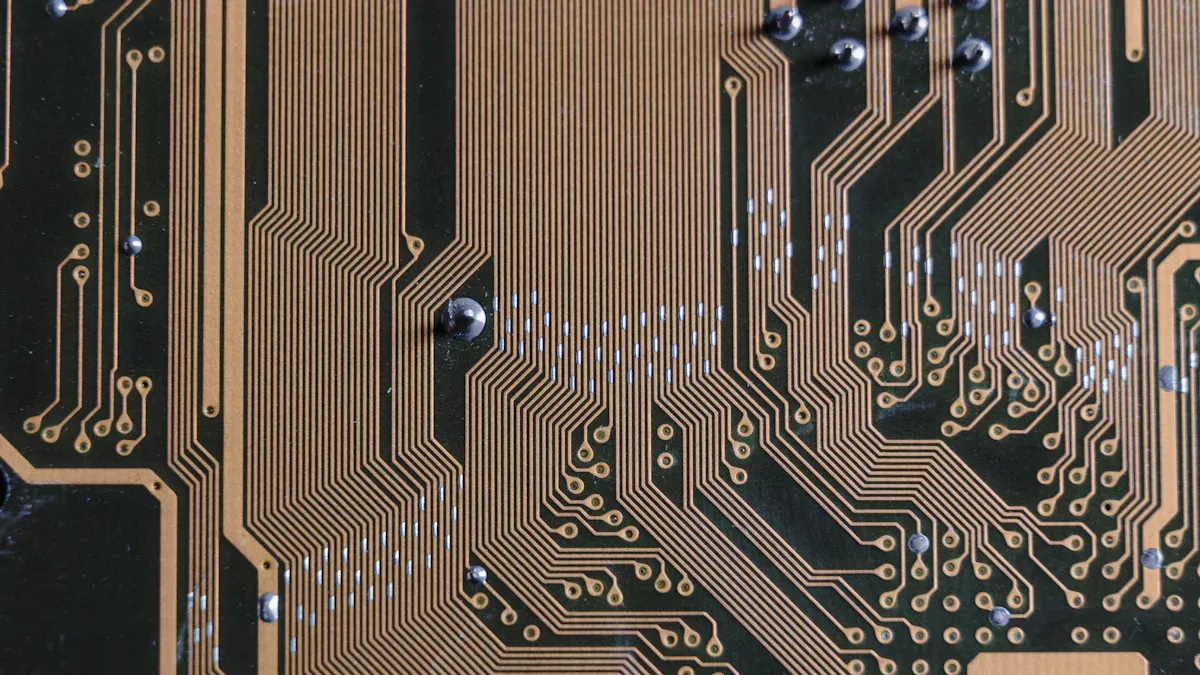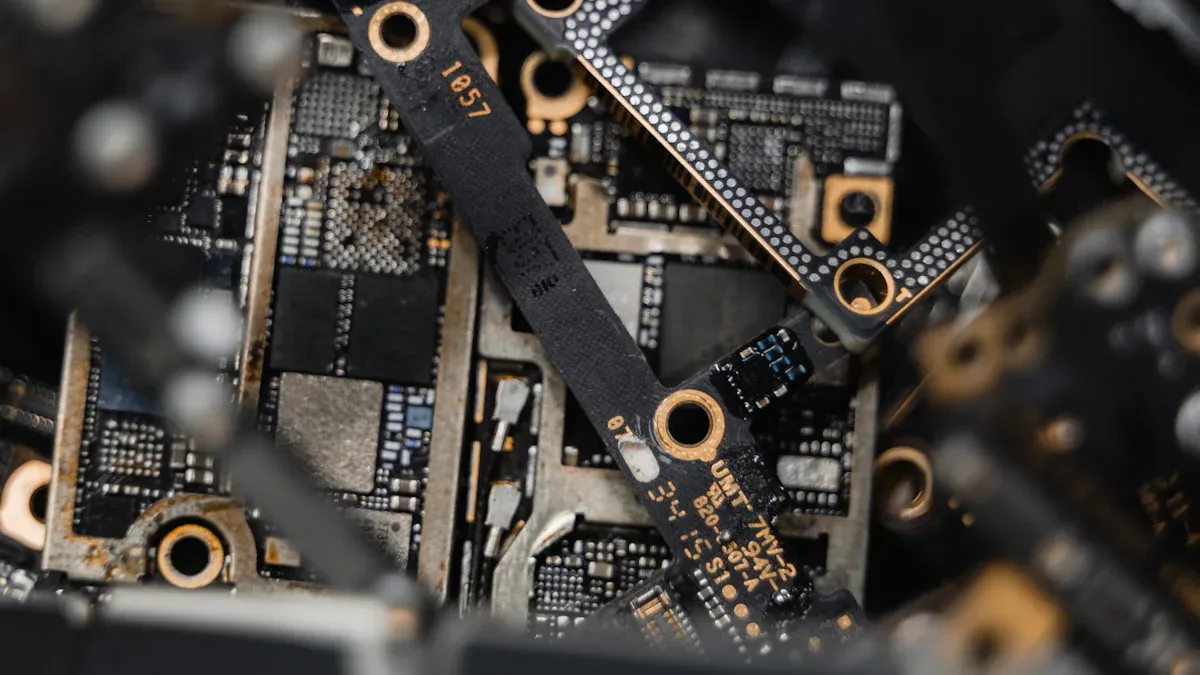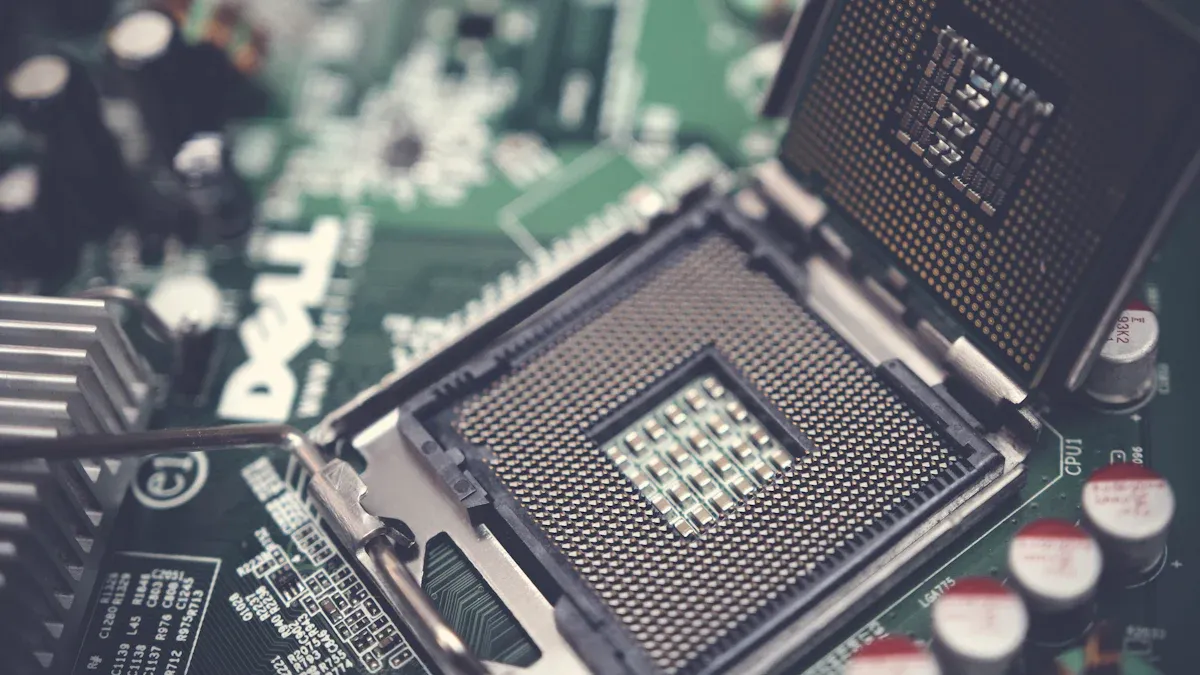
Advancements in CVD Recubrimiento de SiC technology have revolutionized the durability of semiconductor equipment, achieving a remarkable 200% improvement. These advancements stem from breakthroughs in material science and deposition techniques.
- The global demand for blocker plates has surged, reflecting the role of material innovations in enhancing equipment durability.
- Blocker plates now offer superior thermal stability and corrosion resistance, crucial for longevity.
- Tailored designs for deposition processes further optimize performance and durability.
El cvd coating process now integrates wear-resistant components, enhanced Recubrimiento de SiC formulations, and precise deposition methods. These innovations ensure uniform films, reduced contamination, and extended equipment lifespan.
Key Takeaways
- CVD SiC coating makes semiconductor tools last 200% longer.
- Better materials and methods create stronger coatings, saving money.
- Using advanced CVD SiC coatings helps reduce waste and energy use.
Overview of CVD SiC Coating

Definition and role in semiconductor equipment
CVD SiC coating plays a critical role in the semiconductor industry. It provides a protective layer that enhances the performance and reliability of semiconductor devices. This coating is created through a chemical vapor deposition process, where silicon and carbon compounds react on a substrate to form silicon carbide. The result is a high-purity, high-quality material that meets the rigorous demands of semiconductor manufacturing.
The importance of CVD SiC coating lies in its ability to withstand extreme conditions. It offers exceptional thermal stability, corrosion resistance, and mechanical strength. These properties make it indispensable for components like blocker plates, which face harsh environments during semiconductor fabrication. By improving the durability of these components, CVD SiC coating ensures consistent performance and reduces the risk of equipment failure.
Current challenges in durability and performance
Despite its advantages, achieving optimal durability and performance in CVD SiC coating remains a challenge. Semiconductor equipment operates under intense conditions, including high temperatures, corrosive chemicals, and abrasive materials. These factors can degrade the coating over time, leading to reduced efficiency and increased maintenance costs.
The growing demand for high-performance semiconductors further amplifies these challenges. Industries such as electric vehicles and renewable energy rely on semiconductors with superior capabilities. This demand drives the need for coatings that can deliver enhanced durability and energy efficiency. Additionally, the global focus on sustainability has increased the pressure to develop coatings that align with energy-saving goals.
| Tipo de prueba | Descripción |
|---|---|
| Avances tecnológicos | New developments in SiC coating technologies enhance performance and efficiency in semiconductor devices. |
| Increasing Demand for High-Performance Semiconductors | The demand for semiconductors with high performance has grown across industries, driven by SiC coatings. |
| Electric Vehicle Market Expansion | The growth in the electric vehicle market is significantly contributing to the demand for SiC coatings. |
| Investment in R&D | Large investments in R&D lead to innovations in SiC coating technologies, improving performance and reducing costs. |
| Increased Focus on Energy Efficiency | The global emphasis on energy efficiency drives the demand for SiC coatings, aligning with sustainability goals. |
To address these challenges, researchers and manufacturers are investing heavily in innovation. Advances in material science, process optimization, and equipment design are paving the way for more robust and efficient CVD SiC coatings. These efforts aim to meet the evolving needs of the semiconductor industry while ensuring long-term reliability and cost-effectiveness.
Technological Advancements in CVD SiC Coating
Material Innovations
Material innovations have significantly enhanced the performance of CVD SiC coating. Researchers have developed advanced silicon carbide formulations that improve thermal stability and resistance to wear. These formulations include high-purity SiC materials, which ensure uniform coating layers and reduce the risk of defects. By refining the composition of the coating, manufacturers can achieve better adhesion to substrates, resulting in longer-lasting protection.
Nanotechnology has also played a vital role in material advancements. Engineers now incorporate nanoscale particles into the coating to enhance its mechanical strength. These particles create a denser structure, making the coating more resistant to cracking and abrasion. This innovation has proven especially beneficial for semiconductor equipment operating in extreme environments.
Process Optimization
Optimizing the deposition process has further improved the quality and durability of CVD SiC coating. Advanced chemical vapor deposition techniques now allow for precise control over temperature, pressure, and gas flow. This level of control ensures consistent coating thickness and uniformity across complex surfaces.
Automation has also revolutionized the deposition process. Automated systems monitor and adjust parameters in real-time, reducing human error and ensuring repeatable results. These systems also minimize material waste, making the process more cost-effective and environmentally friendly.
Another breakthrough involves the use of plasma-enhanced chemical vapor deposition (PECVD). This technique accelerates the reaction between silicon and carbon compounds, enabling faster deposition rates without compromising quality. PECVD has become a preferred method for producing high-performance coatings in the semiconductor industry.
Equipment Design Enhancements
Innovations in equipment design have complemented advancements in CVD SiC coating technology. Modern deposition chambers feature improved sealing mechanisms that prevent contamination during the coating process. These chambers also incorporate advanced heating systems, which maintain stable temperatures for optimal coating performance.
Engineers have also redesigned critical components, such as blocker plates, to maximize their compatibility with CVD SiC coating. These components now feature smoother surfaces and enhanced geometries, which promote better coating adhesion. By aligning equipment design with coating requirements, manufacturers can achieve superior durability and efficiency.
Additionally, modular equipment designs have simplified maintenance and upgrades. Modular systems allow for the quick replacement of worn components, reducing downtime and extending the overall lifespan of semiconductor equipment. This approach aligns with the industry’s focus on cost savings and operational efficiency.
Benefits of Improved CVD SiC Coating Durability

Cost savings and extended equipment lifespan
Enhanced CVD SiC coating technology delivers significant cost savings by extending the lifespan of semiconductor equipment. Industries have reported notable reductions in maintenance expenses due to the improved durability of SiC-coated components. For example:
- A refinery that replaced conventional metal tubes with SiC materials experienced a 40% decrease in maintenance costs over three years.
- SiC tubes used in abrasive slurry transport pipelines demonstrated three times the wear resistance, reducing replacements and downtime. This improvement saved over $100,000 in operational costs within five years.
The extended lifespan of equipment also minimizes the frequency of replacements, leading to lower capital expenditures. In steel manufacturing, advanced coatings recover 20% more heat from furnace exhaust gases, reducing energy consumption by 8-12%. These benefits highlight the economic advantages of adopting advanced SiC coatings.
Environmental and operational advantages
Improved CVD SiC coating durability contributes to environmental sustainability by reducing waste and enhancing operational efficiency. In chemical processing, reactor vessels with advanced coatings last 60% longer, preventing 1.2 million tons of steel waste annually. Similarly, coal-fired power plants save 50,000 tons of coal per year for every 1GW capacity due to better heat transfer efficiency.
Operationally, the enhanced coating reduces contamination risks and ensures consistent performance. Semiconductor manufacturers benefit from fewer production interruptions, leading to higher yields and reduced resource consumption. These advancements align with global sustainability goals, making CVD SiC coating a vital technology for eco-friendly industrial practices.
Advancements in CVD SiC coating technology have redefined semiconductor equipment durability. Material innovations, process optimization, and equipment design have collectively achieved a 200% improvement. Industries like electronics, aerospace, and automotive now benefit from enhanced performance and sustainability.
| Sector industrial | Application of CVD SiC Technology | Impact on Market Growth |
|---|---|---|
| Electrónica | High-performance semiconductor devices | Dominant consumer segment driving demand |
| Aeroespacial | Lightweight, high-strength materials | Increased adoption for next-gen aircraft |
| Automoción | Power electronics in electric vehicles | Significant growth due to green transportation |
| Energy | Photovoltaic cells and power generation | Robust growth from renewable energy demand |
FAQ
What is the primary purpose of CVD SiC coating in semiconductor equipment?
CVD SiC coating protects semiconductor equipment by enhancing thermal stability, corrosion resistance, and mechanical strength. It ensures reliable performance under extreme manufacturing conditions.
How does process optimization improve CVD SiC coating durability?
Process optimization ensures precise control over deposition parameters, resulting in uniform coatings. This reduces defects, enhances adhesion, and extends the lifespan of coated components.
Why is CVD SiC coating important for sustainability?
CVD SiC coating reduces waste and energy consumption by extending equipment lifespan. It aligns with global sustainability goals, promoting eco-friendly industrial practices.
For inquiries, contact:
- By: Semicera
- E-mail: sales01@semi-cera.com
- E-mail: sales05@semi-cera.com
- Tel: 86-0574-8650 3783
- Phone: 86-13373889683